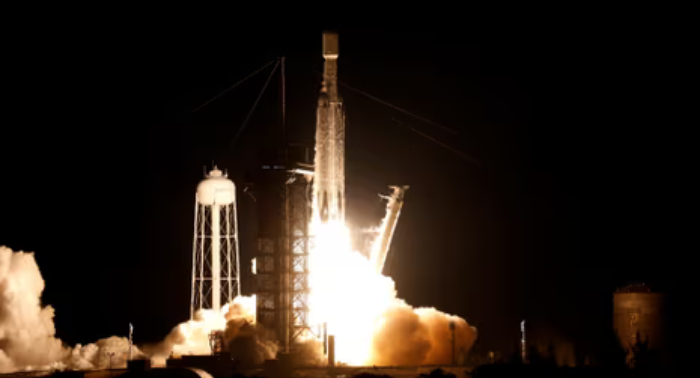On Thursday night, the U.S. military’s enigmatic X-37B robotic spaceplane embarked on its seventh mission, taking off from Florida. This launch was notably the first to utilize a SpaceX Falcon Heavy rocket, offering the X-37B capabilities to reach higher orbits than previously possible.
The Falcon Heavy, with its trio of liquid-fueled rocket cores, launched from NASA’s Kennedy Space Center at Cape Canaveral, creating a stunning spectacle. This event, streamed live on a SpaceX webcast, had been delayed due to adverse weather and technical challenges, leading to the temporary return of the spacecraft to its hangar.
This launch occurs amidst heightened space competition, particularly with China, which recently sent its own robotic spaceplane, Shenlong or “Divine Dragon,” into orbit. Shenlong has been active since 2020, underscoring the growing space rivalry between the U.S. and China.
The X-37B mission, overseen by the U.S. Space Force as part of the National Security Space Launch program, is shrouded in secrecy. The Boeing-manufactured spacecraft, similar in appearance to a miniature space shuttle, is designed for extended orbital missions. It carries out various experiments and payload deployments before landing like an airplane.
Since its first mission in 2010, the X-37B has completed six missions, initially using Atlas V rockets from United Launch Alliance, a Boeing and Lockheed Martin collaboration. Its most recent mission prior to this was launched in May 2020 on a SpaceX Falcon 9 booster.
The latest mission marks a significant advancement, being the first on the Falcon Heavy, which can transport heavier payloads further into space, potentially reaching geosynchronous orbit over 22,000 miles above Earth. The X-37B, also known as the Orbital Test Vehicle, has previously been limited to low-Earth orbits below 1,200 miles.
The specific altitude for this mission remains undisclosed. However, the Air Force Rapid Capabilities Office hinted at tests in “new orbital regimes” and experiments with space domain awareness technologies. This has led to speculation among experts and enthusiasts about the possibility of the X-37B exploring highly elliptical or lunar-proximal orbits.
Industry analyst Bob Hall from COMSPOC, who tracks orbital trajectories, suggests that the mission might even approach the moon, a challenging feat for returning safely to Earth.
Although SpaceX’s webcast was curtailed at the military’s request, leaving some details undisclosed, the company shared photos of the launch on social media with the title: “Falcon Heavy Launches USSF-52 to orbit.”
Adding to the mission’s intrigue, the X-37B carries a NASA experiment studying the impact of space radiation on plant seeds, a vital research area for future long-duration space missions to the moon and Mars.
Meanwhile, China’s Shenlong was launched on December 14 using a Long March 2F rocket, a less powerful launch system than the Falcon Heavy, believed to be confined to low-Earth orbit deliveries.
U.S. Space Force General B. Chance Saltzman commented on the timing of the Shenlong launch, suggesting it was a competitive response to the X-37B mission.
While the duration of the X-37B’s current mission is undisclosed, patterns suggest it could extend until June 2026 or later, following the trend of increasingly lengthy missions, with its last mission surpassing two years in orbit before landing in November 2022.




